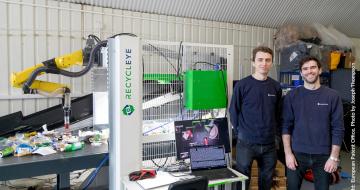Table of Contents
A Benelux trademark grants protection for Belgium, the Netherlands and Luxembourg, while a European Union trademark grants protection in all Member States of the European Union.
If you also wish to obtain protection of your trademark beyond the European Union, you can follow the local procedures in each country individually. If there are a lot of countries, this may turn out to be a long and costly undertaking. It may be useful in this case to use the international application system, also known as the Madrid System. This option must be examined on a case-by-case basis and for this reason it is preferable to consult an expert.
What is the Madrid System (or Madrid Protocol)?
The Madrid Protocol concerning the international registration of marks is a treaty administered by the International Bureau of the World Intellectual Property Organisation (WIPO) in Geneva. It has been in force since April 1996. The Madrid Protocol offers trademark holders the possibility of protecting trademarks in multiple countries by simply submitting a single application to the WIPO.
Advantage of the international system
The advantage of the international system is that from a single application to the WIPO through a filing with your own national or regional trademark office, you can obtain protection for your trademark in all the countries you have designated. This possibility only exists for countries that have joined the Madrid System, currently more than 120 countries worldwide. Since the European Union's accession to the Madrid Protocol, it has also been possible to designate the European Union.
There are two steps for any application in accordance with the Madrid System:
- First of all, you register your trademark in the country of origin. In other words, if you are located in Belgium, you first apply for a Benelux trademark or a European Union trademark in accordance with the normal procedure.
A very small minority of countries requires that you first obtained a definitive registration of your trademark in your country of origin. These are the countries which only signed the Madrid Agreement and not the Madrid Protocol.
- After that, based on this previous application (or registration) in the country of origin, you need to apply to the same office for an international registration, specifying to which countries you want the protection of your trademark to be extended. This is only possible for countries that are members of the Madrid Union. The international application is transmitted to the International Bureau of the WIPO in Geneva, which then publishes the application in its monthly journal (WIPO Gazette of International Marks).
The WIPO then sends your application to the national trademark offices of the countries you designated, where the normal registration procedure of the country concerned takes place. At this stage, grounds for rejecting your application can be invoked and your application may or may not be accepted in certain countries. If the national trademark offices do not notify the refusal within the prescribed period, the application will be deemed to have been accepted.
The international registration does not have the value of an international trademark that would be automatically valid in all the countries of your application. It replaces a national application in each of these countries and therefore, consists, as it were, of a bundle of national trademark filings.
The Madrid System has also greatly simplified the subsequent management of the trademark since changes or renewal of registration can be registered by a single simple procedure with the International Bureau of the WIPO. In addition, other countries may be designated after the international registration.
Where and how?
Although the international registration is processed by the International Bureau of the WIPO, you must submit your international applications to the Office where your basic application was filed. This will either be the Benelux Office for Intellectual Property or the European Union Intellectual Property Office.
In January 2014, the BOIP launched a new tool for the electronic transmission of international trademark applications. From that date, it was no longer possible to submit international trademark applications on paper.
To submit an international trademark via the BOIP, it is necessary to have an account with this Office. You can simply create one on the website of the BOIP, more specifically on the page 'International trademark registration'.
If you have any questions, please contact the BOIP Information Center.
More complete and up-to-date information on the member countries of the Madrid System and on the details of international registration can be found on the website of the WIPO.
Tariffs
You can find an overview of the fees to be paid on the websites of the WIPO, EUIPO and the BOIP.


